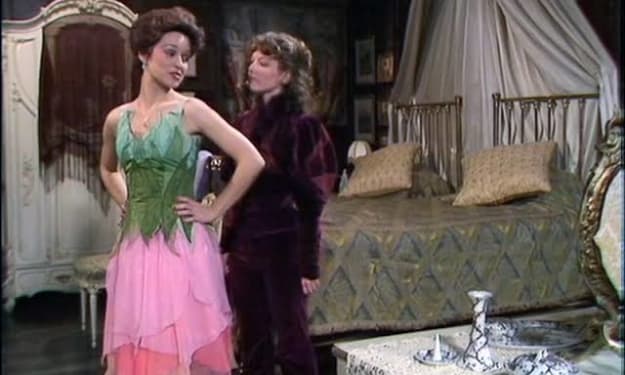Scribbles & Scribes
Literacy in Anglo-Saxon England

INTRODUCTION
Perhaps the second greatest topic of my extensive time as an undergraduate was entitled Medieval Myths and Monsters: The Origin of Modern Fantasy (co-run by a pair of brilliant eccentrics, Dr Lisa Bennett and Dr Erin Sebo). In said topic my dear friend and mentor, Dr Erin Sebo spoke about the attitudes towards and cultural status of the written word from a cultural and linguistic Sandpoint. One point she made was the intersection of words related to magic and those related to literacy. Being even less versed in the Old-English Language than I am now (which is still rudimentary) at the time, none of the Old-English examples spring to mind. The modern English example she gave was the word ‘spell’, the noun synonymous with ‘incantation’ and the verb relating to the specific arrangement of letters to make words. I could find written sources for none of this though which is allows me to make a point below.
The introduction of Christianity and the literary tradition (and writing system) that came with it drastically changed the social dynamics of Anglo-Saxon England (see below). It radically changed the way they transmitted, learned and retained information, the results of which are still evident today.
GERMANIC RUNES (AND WHY I’M NOT COUNTING THEM)
Prior to the seventh century AD, when Christianity brought with it Latin literacy, there is extensive evidence of runic literacy (Kelly, 1990:36–37). The Saxons had brought these runes with them. Runic literacy is vastly different from that which we know today. I am focusing on literacy in the Latin alphabet so I will largely be ignoring runic literacy below.
Runes, unlike the Latin alphabet, were designed to be carved into wood (and other media) which is typically not well preserved. A prime example of this is the Sutton Hoo ship, of which almost none survived to Basil Brown’s original excavation. This means that the widespread use of rune sticks for conveying messages can only be theorised (Kelly, 1990:37).
Nevertheless, a degree of runic literacy is evident in the period prior to the introduction of Christianity and the Latin alphabet in the seventh century AD. There is also evidence that this literacy overlaps considerably with Latin literacy by quite some time before its decline. For example, the solutions to some Anglo-Saxon riddles rely on knowledge of Germanic runes. Characters such as ‘Æ’ ‘Ð’ and ‘Þ’ (derived from Germanic runes to represent sounds not found in Latin at the time) indicates that some Anglo-Saxon clerics were at least somewhat rune literate. There was a marked decline in this literacy in the late Anglo-Saxon period (Kelly, 1990:37).
While Rune literacy is a rich topic in itself I have elected to set it aside in the interest of that of Latin literacy.
LITERACY
The Latin alphabet was first introduced to Anglo-Saxon Britain through the church from the late sixth century. It was then adapted for writing Old -English with the addition of several rine derived characters. Latin literacy came hand in hand with the Christianity through which it gained a foothold on the English people which is still evedent today, half way around the world and over a millena in the future (Kelly, 1990:36). This is a foothold that has never been shaken in its entirety. As evidenced by the fact that I am sitting here writing a research essay after having read the relevant material. As opposed to orating information that I have learned via oration. There is obviously an element of the latter in current learning practices but it is not considered valid information unless I have properly cited something someone else has written down, citing something else that has been written down before that and so on and so forth.
Writing in Anglo-Saxon England began as an ecclesiastical practice. The people who could read and write were monks and other members of the church. Scribes were trained by the church. Even secular documents were composed and recorded by monks (Kelly, 1990:38).
RECORDS
Much of the surviving secular text from the period are records. Land charters, the earliest examples of this are related to land gifted by the king for the establishment of monasteries and other ecclesiastical complexes (Kelly, 1990:43). These deeds were often either copied or bound into gospel books to associate the contracts with the divine (Kelly, 1990:44). Over time laymen began to obtain similar land deeds due to the success of the ecclesiastical practice.
Over time recording things in writing became more and more prominent. Great monastic houses began to keep detailed records of their estates, stock, tenants, rents.
The cultural obsession with keeping written records extends into the great cultural mirror that is Star Trek when Odo, a shapeshifter from an illiterate culture and chief of security on Deep Space Nine (the setting of the Star Trek iteration of the same name) records a security log on the humanoid obsession with keeping written records, forcing them to continually invent smaller and smaller ways to store said records (Conway, 1993).
Anglo-Saxon records were often kept in a mixture of Latin and Old-English. Parts for public consumption, practical information such as boundaries, were kept in Old-English while formalities were written in Latin (Kelly, 1990:45–50).
ALFRED THE GREAT (R. C. 879–899 AD)
Alfred the Great is known predominantly for two things, inventing the British Navy and being a champion of literacy in England. The man was a huge nerd (Savage, 1983:92–111). During his reign Alfred became concerned about the literacy of his people. Though he was illiterate himself until at least twelve years of age and while he could read in Lain and Old-English later in life he could never write in either (Kelly, 1983:60). He was an advocate for literacy and all five of his children could both read and write in both Latin and Old-English (Kelly, 1990:52).
Alfred was concerned with the level of Latin literacy in the south. This is evident in the Canterbury charters of the 820s which show signs of grammatical and compositional weakness (Kelly, 1990:54).
It is because of his concern for literacy that he had his law codes written down and this was more an ideological statement than for use as an actual reference text as we would think of it today. By all indications the law was Verbum Regis (‘King’s Word’) as opposed to a document (Keynes, 1990:228). We see this shift over time.
Alfred also implemented large scale translations from Latin into Old-English as he had the radical idea that the English should read and write English as a matter of priority (Kelly, 1990:54). Some of this translation he did himself.
CONCLUSION IN ORAL TRADITION
As mentioned earlier the literate cultural shift reaches us here and now, halfway around the world and a millennia in the future. Academia is one clear and present example. I flatter myself that my observational skills and pattern recognition are as developed as anyone. I also have more than a passing familiarity with the text of Beowulf and the Sutton Hoo Ship Burial. It is reasonable, therefore, for me to make the observation that the funerals that bookend Beowulf bare more than a passing resemblance to Sutton Hoo (Tolkien, 2014:13–106; Bruce-Mitford and Lascombe, 1973).
This logically implies come kind of causation relationship between the two. Was Sutton Hoo constructed as a result of Beowulf? Or were the two burials added at some point by a poet who happened to have been witness to the Sutton Hoo burial and thought it would be a nice thing to add to the story? It seems logical that the striking similarities in Beowulf are not a coincidence, given the spaciotemporal proximity. The causal relationship is for someone who knows more about these things than I to determine. Surely though, I aught to be able to make the observation independently. As it stands I probably have to be a very senior academic to get away with it. You’ll notice I’m trying anyway in a sort of case in point.
Then at his allotted hour Scyld the valiant passed into the keeping of the lord; and to the flowing sea his dear comrades bore him, even as he himself had bidden them, while yet their prince, he ruled the Scyldings with his words: beloved lord of the land, long was he master. There at the heaven stood with ringed prow, ice-hung, eager to be gone, the prince’s bark; they laid then their beloved king, giver of rings, in the bosom of the ship, in glory by the mast. There were many precious things and treasures brought from regions far away; nor have I heard tell that men ever in more seemly wise arrayed a boat with weapons of war and harness of battle; on his lap lay treasures heaped that now must go with him into the dominion of the sea. With lesser gifts no whit did they adorn him, with treasures of that people than did those that in the beginning sent him forth alone over the waves, a little child. Moreover, high above his head they set a golden standard and gave him to the ocean, let the sea bare him. Sad was their heart and morning in their soul. None can report with truth, nor lords in their halls, nor mighty men beneath the sky, who received that load.
–Beowulf, lines 21–40
(Tolkien 2014:14)
This passage could be describing the Sutton Hoo burial, albeit with some obvious deviation. I am not allowed to point this out independently though (again, I am anyway). This is a vestige of the status of the written word in Anglo-Saxon England. Were I a pre-literate Anglo-Saxon this would be a perfectly reasonable conclusion for me to make independently. As it is, I really should have referenced someone smarter than me writing it down, who has referenced someone else writing it down and so on and so forth until someone very senior has made the original observation.
WORKS CITED
Bruce-Mitford, R. and M.R. Lascombe. 1975 The Sutton Hoo Ship Burrial (Vol. 1). London: British Museum Publications.
Kelly, S. 199o Anglo-Saxon Lay Society and the Written Word. In R. McKitterick (ed.), The Uses of Literacy in Early Medieval Europe, pp.36–62. Cambridge: Cambridge University Press.
Keynes, S. 199o Royal Government and the Written Word in Late Anglo-Saxon England. In R. McKitterick (ed.), The Uses of Literacy in Early Medieval Europe, pp.226–257. Cambridge: Cambridge University Press.
Savage, A. 1983 The Anglo-Saxon Chronicles. London: Book Club Associates.
Tolkien, J.R.R. and C. Tolkien (ed.) 2014 Beowulf: A Translation and Commentary. New York: Harper Collins Publishers.
About the Creator
Laura Hibble
She/Her
Archaeologist mostly. Also actor, writer, lesbian, student, friend, sister, daughter, geek... Knows and is interested in lots of stuff which she sometimes writes about.






Comments
There are no comments for this story
Be the first to respond and start the conversation.